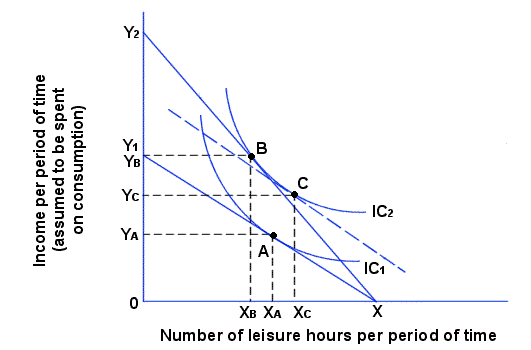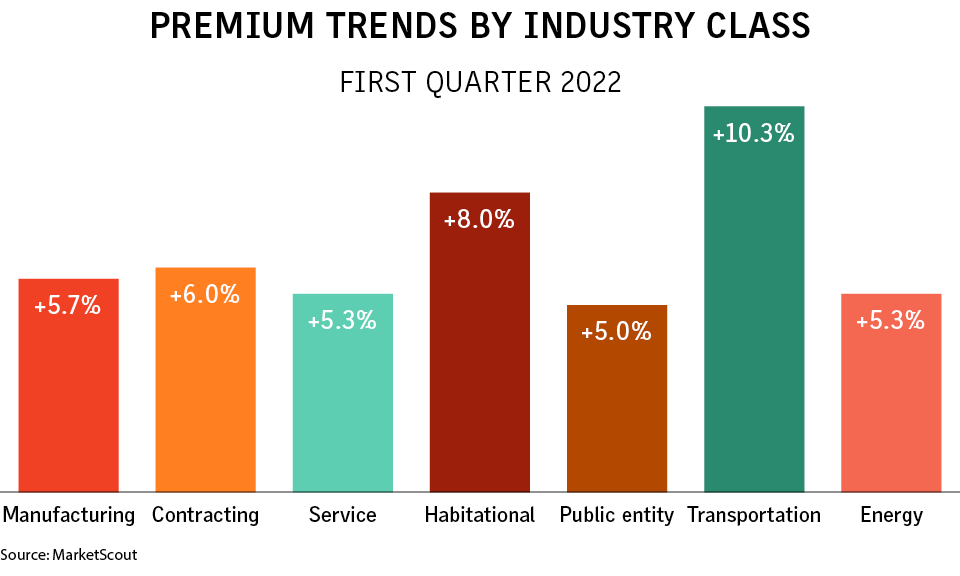Employee benefits
Navigating Business Risks: Current Insurance Trends
![]()
Navigating Business Risks: Current Insurance Trends
The landscape of business insurance is constantly evolving to address emerging risks and challenges. In this article, we explore the current trends shaping the world of business insurance, providing insights into how companies can navigate risks effectively.
Rising Importance of Cyber Insurance
In an era dominated by digital connectivity, cyber threats have become a significant concern for businesses. Cyber insurance has emerged as a vital component of risk management, providing coverage against data breaches, ransomware attacks, and other cyber risks. As technology continues to advance, the demand for robust cyber insurance policies is expected to rise.
Pandemic-Related Coverage Considerations
The global pandemic has highlighted the need for businesses to reassess their insurance coverage. Many traditional insurance policies did not adequately address the challenges posed by the pandemic. As a result, there is a growing trend towards exploring and implementing business interruption insurance that specifically covers pandemics and other unforeseen global events.
Focus on ESG (Environmental, Social, and Governance) Factors
Environmental, Social, and Governance (ESG) considerations are increasingly influencing business practices, and insurance is no exception. Companies are placing greater emphasis on ESG factors in their risk assessments and insurance strategies. Insurance providers are responding by offering products that align with sustainable and socially responsible business practices.
Remote Work and Flexible Coverage
The shift towards remote work has prompted a reevaluation of traditional insurance models. Businesses are seeking more flexible coverage options that accommodate remote work environments. This includes coverage for employees working from various locations and ensuring that insurance policies remain relevant in the evolving landscape of remote and flexible work arrangements.
Climate Change Impact on Insurance
The escalating impact of climate change has led to a surge in insurance claims related to natural disasters. Insurers are adapting by incorporating climate risk assessments into their underwriting processes. Businesses are also increasingly aware of the need for comprehensive coverage against climate-related risks, such as flooding, wildfires, and other extreme weather events.
Integration of AI and Data Analytics
Advancements in artificial intelligence (AI) and data analytics are revolutionizing the insurance industry. Insurers are leveraging AI to enhance underwriting accuracy, streamline claims processing, and assess risks more effectively. The integration of technology not only improves the efficiency of insurance processes but also allows for more tailored and data-driven coverage.
Supply Chain Disruption Coverage
The global supply chain disruptions experienced in recent years have underscored the importance of supply chain insurance. Businesses are recognizing the need for coverage that protects against disruptions caused by events such as natural disasters, geopolitical tensions, or global health crises. Supply chain insurance is becoming a key consideration for risk management strategies.
Evolving Employee Benefits Landscape
Employee benefits are integral to attracting and retaining top talent. The evolving employee benefits landscape includes insurance offerings beyond traditional health and retirement plans. Businesses are exploring innovative benefits such as mental health coverage, wellness programs, and unique insurance packages to enhance employee satisfaction and well-being.
Increased Emphasis on Legal and Regulatory Compliance
The ever-changing legal and
Optimizing Workforce: Effective Employee Benefits Strategies

Optimizing Workforce: Effective Employee Benefits Strategies
Employee benefits play a pivotal role in attracting and retaining top talent while fostering a positive work environment. In this article, we explore the significance of employee benefits in businesses and delve into effective strategies for optimizing the workforce through comprehensive benefits packages.
Understanding the Impact of Employee Benefits
Employee benefits go beyond traditional salary packages, influencing job satisfaction, employee loyalty, and overall well-being. A robust benefits program communicates a company’s commitment to the welfare of its employees, creating a positive workplace culture. Understanding the profound impact of employee benefits is crucial for businesses aiming to build a motivated and dedicated workforce.
Attracting Top Talent with Competitive Benefits
In today’s competitive job market, attracting top talent requires more than just a competitive salary. Prospective employees often assess the overall benefits package offered by a company. Businesses that offer attractive health insurance, retirement plans, and unique perks position themselves as desirable employers, enhancing their ability to attract high-caliber professionals.
Employee Wellness Programs: A Holistic Approach
Wellness programs have gained prominence as a holistic approach to employee well-being. These programs encompass initiatives such as fitness classes, mental health support, and preventive health measures. Investing in employee wellness not only enhances the physical and mental health of the workforce but also contributes to increased productivity and reduced absenteeism.
Flexible Work Arrangements and Work-Life Balance
The modern workforce values flexibility in work arrangements. Businesses that incorporate flexible work options, such as remote work or flexible hours, recognize the importance of achieving a healthy work-life balance. Flexible arrangements contribute to improved job satisfaction, reduced stress, and increased employee retention.
Financial Wellness: Beyond Salary
Financial stress can significantly impact employee performance. Offering financial wellness benefits, such as financial planning assistance, tuition reimbursement, and employee assistance programs, demonstrates a commitment to supporting employees beyond their immediate job roles. Businesses that address the financial well-being of their employees foster a sense of security and loyalty.
Retirement Plans: Building Financial Security
Retirement plans are a cornerstone of comprehensive employee benefits. Providing retirement savings options, such as 401(k) plans or pension schemes, helps employees build financial security for the future. Businesses that prioritize retirement benefits contribute to the long-term financial well-being of their workforce.
Customizing Benefits Packages to Employee Needs
Every employee has unique needs and priorities. Businesses that offer customizable benefits packages allow employees to tailor their benefits to match their individual circumstances. This level of personalization enhances the perceived value of the benefits program and caters to the diverse needs of a multi-generational workforce.
Communication and Education: Key Components
Effective communication and education about available benefits are essential for maximizing their impact. Many employees may not fully understand the breadth of benefits offered. Businesses should invest in clear communication strategies and educational programs to ensure that employees are aware of and make the most of the benefits available to them.
Employee Feedback and Continuous Improvement
Regularly seeking employee feedback on benefits programs is a valuable practice. Employee surveys and feedback sessions provide
Economic Impact of Evolving Labor Laws

Introduction:
The landscape of labor laws is undergoing significant transformations globally, ushering in a new era with profound economic implications. In this article, we explore the far-reaching effects of changes in labor laws on various aspects of the economy.
Labor Market Dynamics and Flexibility:
Changes in labor laws impact the dynamics of the labor market, introducing flexibility or rigidity depending on the nature of the reforms. Such shifts influence how businesses hire, manage, and retain their workforce, contributing to broader economic trends.
Impact on Wage Structures and Income Inequality:
Wage structures are intricately tied to labor laws, and changes can have implications for income distribution. Reforms that address wage gaps and promote fair compensation contribute to a more equitable society, fostering economic stability.
Employment Rates and Job Security:
Evolving labor laws can influence employment rates and job security. Striking the right balance is crucial to avoid unintended consequences such as reduced hiring or job insecurity. A stable employment environment is essential for sustained economic growth.
Entrepreneurship and Regulatory Compliance:
Changes in labor laws can impact entrepreneurship by altering the regulatory landscape. Entrepreneurs must navigate these changes, ensuring compliance while fostering an environment that encourages business innovation and growth.
Employee Benefits and Workplace Culture:
Labor laws often dictate employee benefits and workplace culture. Reforms in this area can affect businesses’ costs and employees’ satisfaction, influencing overall workplace dynamics and, consequently, economic productivity.
Collective Bargaining and Labor Unions:
The relationship between labor laws and collective bargaining is pivotal. Changes can impact the power dynamics between employers and labor unions, shaping working conditions and influencing economic negotiations within various industries.
Training and Skill Development Initiatives:
Labor laws play a role in shaping training and skill development initiatives. Reforms that encourage workforce upskilling contribute to a more skilled and adaptable labor force, fostering innovation and economic competitiveness.
Gig Economy and Freelance Work:
With the rise of the gig economy, changes in labor laws impact the classification of workers and the nature of freelance work. Adapting regulations to the evolving work landscape is crucial for sustaining economic growth in this sector.
Global Talent Mobility and Economic Competitiveness:
Labor laws influence global talent mobility, impacting a nation’s economic competitiveness. Attracting and retaining skilled professionals contributes to innovation and economic growth, positioning countries on the global stage.
Linking Economic Effects to Informed Decision-Making:
For a deeper exploration of the economic effects of changes in labor laws and strategies for informed decision-making, visit vexhibits.com. Discover insights into navigating the evolving labor landscape and ensuring economic resilience amid regulatory changes.
Conclusion:
In conclusion, the economic effects of changes in labor laws are multifaceted, influencing labor market dynamics, income distribution, employment rates, entrepreneurship, workplace culture, collective bargaining, skill development, the gig economy, global talent mobility, and overall economic competitiveness. As labor laws continue to evolve, businesses and policymakers must collaborate to strike a balance that fosters a fair and dynamic labor environment, contributing to sustained economic growth.

